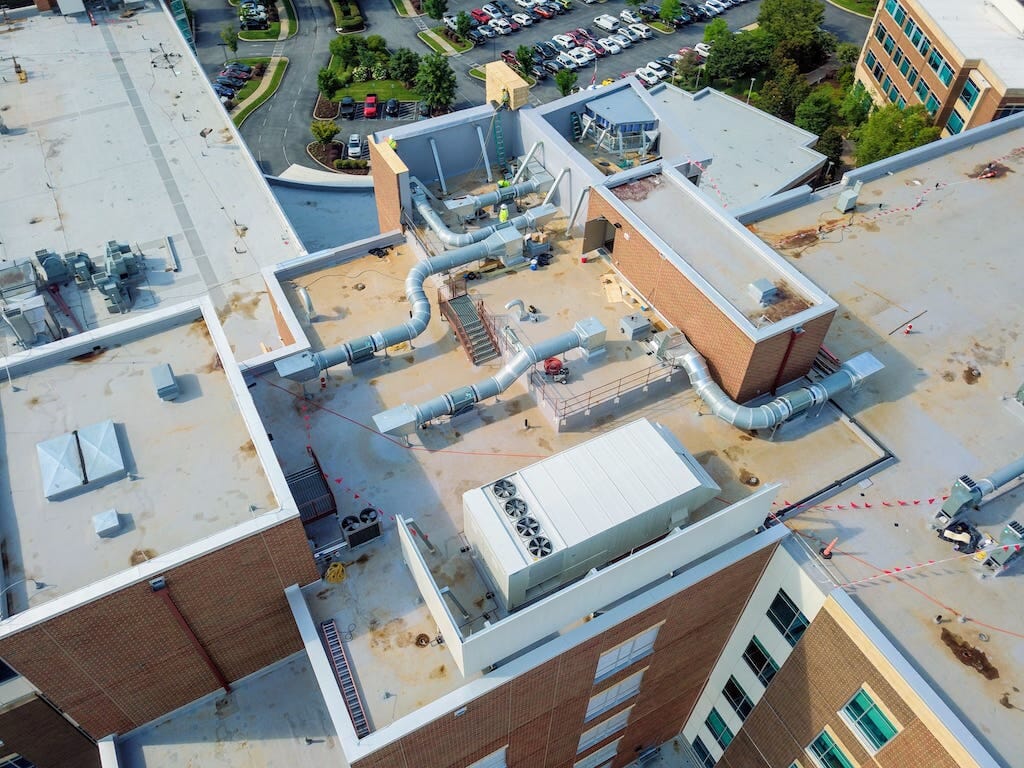No one wants a hole in their building’s roof, but any general contractor knows that sometimes rooftop penetrations are necessary for the functioning of a commercial building. Vent pipes, skylights, HVAC blocks and metal pipes are all common on commercial roofs, and experienced roofing contractors build these out regularly on construction projects.
While general contractors and construction managers need a basic understanding of roof penetrations, it’s always a plus to involve a professional roofer in the process. Here are the things every general contractor should know about rooftop penetrations in order to best inform the process.
What Is a Rooftop Penetration?
A roof penetration is anything that requires a break in the roofing membrane and roof deck. Penetrations are common on flat roofs because they often require pipe penetrations, drainage, and ventilation. Almost every commercial roof will require some type of penetration for the building to function properly. Penetrations are one of the most complex elements of commercial roofing construction, and these areas are the most vulnerable parts of a completed roof.
How Roof Penetrations Work
Roofers use a mix of metal and sealing tools to protect penetrations and keep them watertight. These include flashing and seals, pipe flashing, and roof jacks. Some older commercial roofs may also have pitch pans, which are metal boxes that surround the penetration and are filled with grout. Most commercial roofing companies no longer build new pitch pans because they leak easily.
Finding the Right Roofing Contractor for Penetrations
A reputable commercial roofing company should be familiar with roofing penetrations. Whether a building needs a vent roof or a flashing roof, the roofing company should be able to design, build, and maintain the penetrations. General contractors should limit their search to roofing contractors that focus on commercial buildings. A lot can go wrong with a roof penetration, so finding a reputable company with experience is paramount.
Maintaining a Roof Penetration
General contractors should be aware that a roof with penetrations will require more regular maintenance than one without. Flashing, sealant, and other elements of penetrations should be monitored in order to keep the roof waterproof. Even well-built roofing penetrations are vulnerable parts of a completed commercial roof. Be sure to develop a plan with your commercial roofer for how to protect roofing penetrations and keep personnel away from them.
If you’re ready to get started on a new roof project, contact Maxwell Roofing & Sheet Metal, Inc. today! Our team is experienced and ready to help.

